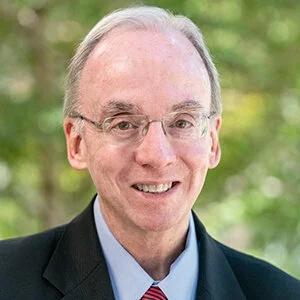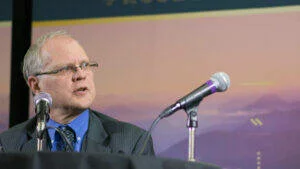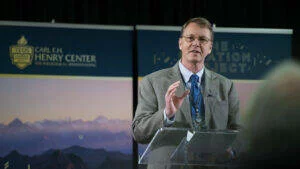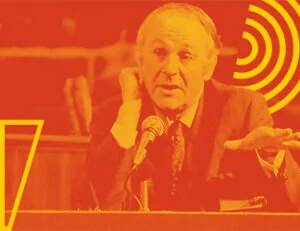After hearing the gospel of Jesus Christ proclaimed by evangelist Mordecai Ham at an evangelistic meeting in Charlotte, NC in 1934, Billy Graham, along with his friend Grady Wilson, responded to the invitation as the hymn “Just as I Am” was sung.
This beautiful and moving gospel song, written by Charlotte Elliott in 1835, became the well-known invitation hymn for numerous crusade services led by Mr. Graham as well as the title of his autobiography. William Franklin “Billy Frank” Graham Jr. was born on November 7, 1918 and went to be with the Lord on February 21, 2018 at the age of 99, having believed, lived, and proclaimed that we come to Christ “without one plea, but that Thy blood was shed for me.”
Billy Graham appeared on the Gallup listing of most admired men in the world sixty times from 1955 to 2015 and befriended more than a dozen American presidents beginning with Harry Truman. In doing so, he became known as the preacher to presidents. Even though had a special relationship with Presidents Eisenhower, Johnson, Nixon, Bush 41 and Bush 43, Graham wanted primarily to be known as one who was faithful in preaching the gospel throughout his life. The 20th century’s best known preacher proclaimed the gospel to more people than anyone else in history. An ordained Southern Baptist minister, Mr. Graham preached to an estimated 215 million people in 185 countries on six continents over six decades of ministry. He also was heard or seen by millions more on radio, television, film, video, and webcasts.
America’s Pastor
Entrepreneurial in spirit and transdenominational in practice, “America’s Pastor,” as he was often called, was instrumental in the launch of dozens of other ministries and parachurch organizations such as The Hour of Decision, Decision Magazine, Christianity Today, and Worldwide Pictures, as well as the founding of Gordon-Conwell Theological Seminary, among others. One cannot understand the entrepreneurial and transdenominational character of the evangelical movement apart from understanding the full-orbed reach of Graham’s ministry. Beyond his shaping influence in this country, Graham joined with British evangelical leader John R. W. Stott to initiate the work of the Lausanne Movement, built upon the work of the 1966 World Congress on Evangelism in Berlin. Aspects of thisOne cannot understand the entrepreneurial and transdenom- inational character of the evangelical movement apart from understanding the full-orbed reach of Graham’s ministry legacy can be seen at the Billy Graham Library in Charlotte as well as at the Billy Graham Center at Wheaton IL. In addition, among many other tributes and legacy markers, there is a Billy Graham School of Missions, Evangelism, and Ministry on the campus of Southern Seminary and a Billy Graham Chair of Evangelism at Beeson Divinity School.
A graduate of Wheaton College where he met his wife, Ruth, Graham had served briefly as a pastor and as president of Northwestern Bible College in Minnesota. It was his work as an evangelist, however, which started with his days with Youth for Christ in the 1940s, that became his passion and his life’s work. The eight-week Los Angeles Crusade of 1949 was the event that made Graham a household name as the media provided abundant attention for the North Carolina farm boy. The 1957 New York City crusade continued for 16 weeks and was attended by 2.4 million people. From that point forward, his mission and ministry became the model for preachers all across America. Church services were patterned after the Graham campaigns, with a focus on evangelistic worship services, often concluding with an invitation for people to respond to the gospel as the congregation sang all six verses of “Just as I Am.”
His ministry triangulated the larger Christian movement in America, with a Bible-based message that separated him from American liberalism and an evangelical ecumenical spirit that distanced him from American fundamentalism. This developing evangelical movement, shaped by commitments to the gospel and to Holy Scripture, was led by Graham, Harold Ockenga, and Carl F. H. Henry. Graham never departed from a commitment he made in August of 1949 at the Forest Home Retreat Center in California, where, after wrestling with the question regarding the truthfulness of the Bible, the evangelist, in tears, fell to his knees and confessed the Bible to be the inspired, written word of God. He claimed that he felt the presence and power of God at that moment in a way that he had never experienced it before. That commitment framed Graham’s preaching, which was grounded in what “the Bible says.” Graham’s humility, transparency, and commitment to team leadership made a difference throughout his life, as he worked carefully and collaboratively with Grady Wilson, T. W. Wilson Jr., Cliff Barrows, George Beverly Shea, and others decade after decade.
The Future of Evangelicalism after Graham
The incredible life, ministry, influence, and legacy of Billy Graham has been well chronicled and we have only highlighted a few major moments. While we all knew that the day would come when Mr. Graham’s presence would no longer be with us, the reality that such a day has come is still hard to believe. The implications for this absence point to the far-reaching and sweeping role he played in such a visible way for more than half a century. For most of his life, his church membership was at the First Baptist Church of Dallas, TX, where I had the privilege to serve in the 1980s. Though I personally had the privilege to meet him and to be with him on a few occasions, like most others, I observed this anointed man from afar.
Not only did he serve as “America’s Pastor,” but he was the public face of and ambassador for the evangelical movement, both in this country and around the world. In many ways, American evangelicalism was defined and embodied by Billy Graham. In today’sNot only will his vast influence in that area be missed, but we will also miss his dedicated efforts to wed evangelism and social justice as well as his desire to connect evangelism with a commitment to intellectual seriousness. context in which the concept of evangelicalism is quite vague to many and has been overly politicized by the media and others, it will likely become harder to hold the evangelical movement together following Graham’s death. Not only will his vast influence in that area be missed, but we will also miss his dedicated efforts to wed evangelism and social justice as well as his desire to connect evangelism with a commitment to intellectual seriousness.
His faithfulness to the gospel underscored all of these things, but Mr. Graham saw clearly the need for initiatives in the area of racial reconciliation before such clarity came to other evangelical and church leaders. His desire to encourage intellectual seriousness regarding the truth claims of the Christian faith became obvious to others with the launch of Christianity Today under the leadership of Carl Henry. One can point to dozens of other significant accomplishments that were led or nurtured by Graham’s visionary leadership. Seeking to reflect on the significance of his life and the need to carry forth aspects of this work without his ongoing presence, I would point to four key areas that now call for our attention: (1) an ongoing and unapologetic faithfulness to the gospel message; (2) the need for leadership and guidance for the evangelical movement; (3) the essential need to bring together evangelism with the social dimensions of the gospel; and (4) the importance of connecting the work of evangelism with serious theological reflection and cultural engagement.
At the end of the day, one can best understand Billy Graham’s life through the words of that life-changing gospel song: “Just as I am, Thou wilt receive, wilt welcome, pardon, cleanse, relieve; Because Thy promise I believe, O Lamb of God, I come, I come!” For the life and legacy of Billy Graham, we certainly join with others expressing a heartfelt “thanks be to God!”







Comments
Be the first one to make a comment!